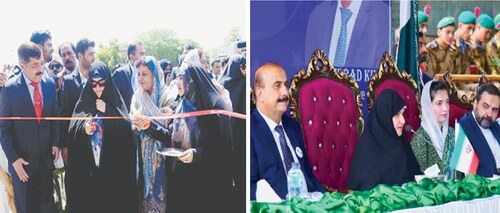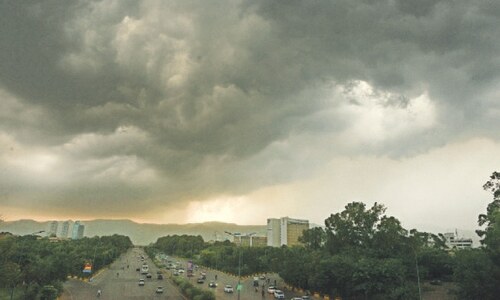
Amardeep Singh worked in the corporate sector until he was inspired to leave his job and research his family roots and the heritage of the Sikh community in the subcontinent. He travelled around Pakistan for 30 days and realised a large part of the Sikh heritage was lost.
Mr Singh then set about organising his research and has since published it as a coffee table book.
He was in Islamabad for promoting his book, Lost Heritage: The Sikh Legacy in Pakistan, where Dawn caught up with him to talk about his experience in Pakistan and his book.
Q: What was your family’s experience of the partition?
A: My parents used to tell me stories of what happened to my family during the partition. They were from what is now Pakistan. My mother was from Abbottabad and my father belonged to Muzaffarabad, which had a large Sikh population. Shortly after the partition, the Kashmir problem started and Muzaffarabad was attacked, the war cry during which was “Hindu ka zar aur Sikh ka sar”.
A big massacre happened at the Dumail Bridge on Oct 22, 1947, where the Jhelum and Neelum rivers meet and we have grown up with stories from that time. My father’s sister lost two of her children during the massacre and they were found two years later in Rawalpindi where they were being raised by a missionary as Christians. They were reunited with our family later. The first chapter of this book, ‘In search of Roots’, starts with the story of those two children.
Another chapter, Meeting Noori, is the story of Jaswanti, who was a cousin. She lost both her parents under the bridge in that massacre when she was four, and she still remembers the whole thing. During my journey through Pakistan, I traced her and found her as Noori. She was raised by a Muslim family and lives in Rawalpindi.
Q: What inspired this book?
A: My father migrated to UP, India and he would always miss Muzaffarabad. I grew up seeing the sorrow of that on his face, which is part of the reason I undertook this research.
I became interested in the subject and started reading up on the matter when I was in my 20s. I went on to do my engineering, joined American Express in the financial services sector in India, moved to Hong Kong and then Singapore.
In 2014, I decided I was done with the corporate world and I left my job. The idea of going to Pakistan began taking hold. I was coming here for the first time, but I had been living in this region for a long time through my parents’ memories.
So, I applied for a Pakistani visa and got a 30-day unrestricted visa. I landed in Lahore, not knowing where I wanted to go and with three changes of clothes, my camera and lenses. I just started connecting with likeminded people and experienced a lot of love in Pakistan, and visited 36 places in 30 days.
Q: What are some of the things you found during your travels and research?
A: A lot of Sikh history is missing from both India and Pakistan. For example, there were only two people in this region who raised a voice to oppose the invasions. The first was Porus in Alexander the Great’s time and the second was Ranjeet Singh.
Ranjeet Singh founded an empire that stretched from Lahore, Sri Nagar, Ladakh to Peshawar. So, the Durand Line is actually Ranjeet’s gift to the Pakistani territory. KP would have been part of Afghanistan and Ladakh would have been part of China if it were not for him.
About 20pc of what was Ranjeet Singh’s empire is now in India and 80pc is in Pakistan. When the partition happened, the Sikhs were like a cucumber in a sandwich. All of our history is in these lands, and yet if you ask someone from my community now where they would go if they had free access in Pakistan, they cannot think of any place other than Nankana Sahib and Punja Sahib. So we took the great legacy we had here and reduced it to two gurdwaras, but legacies are bigger than religions.
A cousin in Mansehra, who is also Sikh and stayed in Pakistan after the partition, took me to his father’s grave, on which is written, ‘Ghulam Sarwar wald Makhan Singh’, and stories like these are part of our legacy. Stories like Noori’s and the bridge under which the massacre happened, the havelis, art, architecture, frescos, they form legacies. Gurdwaras are also part of the legacy, but they are not the entire legacy.
I was struggling with why my community has forgotten their legacy. Ask a Syrian what happened to their language, art, culture seven decades from now and you will find the answer in this book.
Published in Dawn, February 2nd, 2017













































Dear visitor, the comments section is undergoing an overhaul and will return soon.